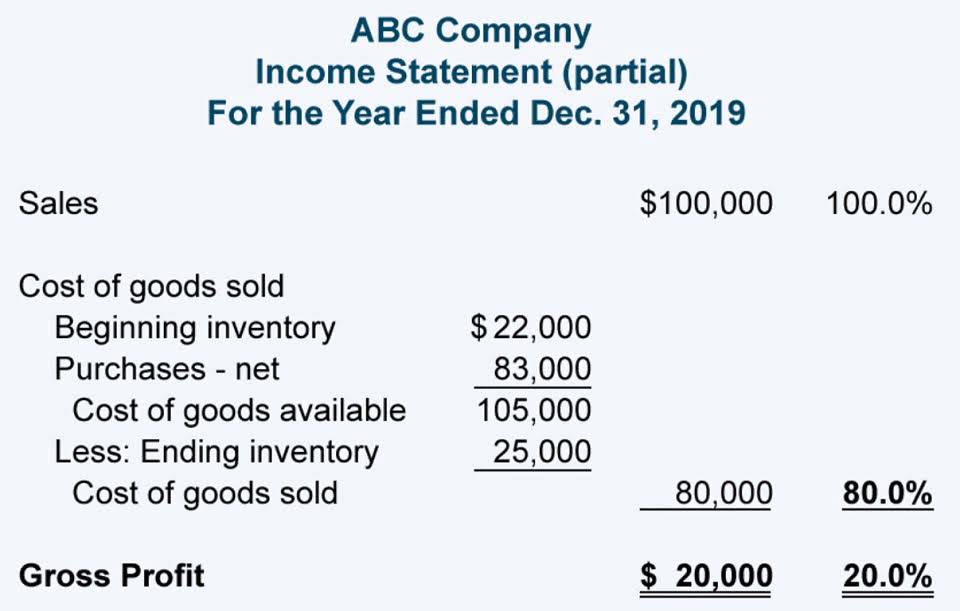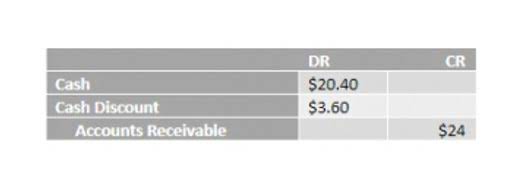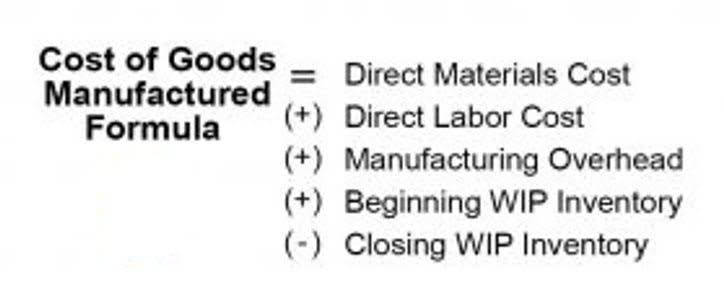How to Calculate FTE: Full-Time Equivalent Formulas & More

Additionally, there are a lot of benefits of using time tracking software like project time tracking. You can also track project profit and loss which is very essential for the stability of an organization. Understanding FTE is like having a magic wand for managing your workforce in business and HR.
Full Time Equivalent (FTE) Calculator Formula
In this case, the calculation may show that the first professional is overqualified for the position, whilst the other needs more training and development. The underlying period can be, for example, a day, a month or even a year. Join BambooHR and League to explore how to go beyond wellness resolutions so your organization https://www.bookstime.com/ can reap all the benefits of a healthy workforce. The development interview is an important means of encouraging employee growth and development within an organization. Because topics such as sustainable employability and binding and engaging talent are currently central to HR, conducting effective development…
Full Time Equivalent (FTE)

In general terms, full-time equivalent (or FTE) is a unit of measure that plays an important role in calculations used in businesses, project management, or federal programs for eligibility purposes. Contractors may or may not be included in FTE calculations, depending on their classification and the organization’s policies. Generally, contractors are not counted as FTEs unless they are considered equivalent to full-time employees. FTE is used in budgeting to estimate labor costs, allocate resources, and determine staffing needs based on workforce capacity. But to calculate FTE, you need to know the working hours and this can be easily tracked by a time tracking software which tracks offline time and idle time.
- It’s primarily used to compare part-time hours to full-time hours to see how many “full time” employees you end up with.
- As you can see from the example above, you can easily calculate how many full-time equivalent employees you need to hire to successfully complete a project.
- Understanding the FTE allows HR to accurately determine the capacity and contribution of part-time workers compared to full-time employees.
- Now, most FTE calculations are going to be made with more than one worker.
- You’re looking to see how many full-time employees they’re equivalent to, so you’ll likely get a number greater than one.
- You can also use an FTE calculation to determine the appropriate pay for part-time workers.
How to calculate full-time equivalents
Her vast knowledge in the industry has enabled her to address issues pertaining to time tracking software,project management, productivity analysis and performance management. She has been researching several strategies for how productivity and time management might assist a business in effectively managing its time flow. Factors such as regular fte meaning hours worked, overtime hours, paid time off, and employee classifications (full-time, part-time) should be considered in FTE calculations. Companies use full-time equivalent (FTE) measurements because they provide a standardized way to evaluate and compare the workload and contributions of employees, even when their work hours vary.
How to Calculate the Full Time Equivalent

It helps in planning for additional resources during peak seasons or temporary demands. It also helps in identifying if there is a need for hiring more full-time employees or utilizing additional temporary workers. It should be noted if you’re using this for project planning, you’ll also have to take into account vacation days and paid holidays. Full-time employees, and many part-time employees, don’t actually work 52 weeks per year.
Calculate FTEs Instantly with Personio
Various FTE formulas accommodate different timeframes and employee types. For weekly calculations, FTE equals total hours worked divided by standard weekly hours (e.g., 40 hours). Monthly FTE is total hours divided by standard monthly hours (e.g., 160 hours). Yearly FTE divides total hours by standard yearly hours (e.g., 2,080 hours).
- Let’s say you have four full-time employees, three part-time employees working 20 hours a week for 30 weeks per year, and one part-time employee working 15 hours a week for 52 weeks per year.
- The author has six years of expertise as a productivity and time management researcher.
- This is most often used with businesses that have several part-time workers and want to determine employee needs in terms of workload and coverage.
- A part-time worker who works half-time would be equivalent to 0.5 FTE.
- Organizations can determine full-time to be a certain number of hours – such as 40, or a certain number of days per week, such as five.
- FTE can be used to compare two different groups of employees, or to compare one employee’s workload over time.
Why the FTE calculation is important

Total Manufacturing Cost: Formula, Guide, & How to Calculate
Where the total manufacturing cost is the total expense related to all labour and supplies used to create a finished product, COGS sold are simply the cost of finished inventory sold within the reporting period. To calculate direct material costs in a manufacturing business, add your beginning direct materials to your direct materials purchased and subtract the ending direct materials for the period. The key difference between direct costs and indirect costs is that direct costs can be tracked to specific item, and tend to be variable. Examples of direct costs include direct labour, materials, wages, commissions, and manufacturing supplies. Businesses can reduce Total production costs while maintaining quality by optimizing processes, embracing lean manufacturing principles, and seeking cost-effective materials. Manufacturing Overhead Cost includes all indirect expenses related to the manufacturing process.
Optimize your workforce, take control of inefficiencies, and watch your profits soar with team time tracking software. The consulting firm was also able to re-negotiate the manufacturing company’s contracts with poor-performing suppliers. Takt time is the rate needed to meet demand, cycle time is the time it takes to produce one unit, and lead time is the time from order placement to delivery. If we enter those inputs into our WIP formula, we arrive at $44 million as the cost of goods manufactured (COGM). Suppose a manufacturer is attempting to calculate its cost of goods manufactured (COGM) for 2021, its most recent fiscal year.
While the total manufacturing cost is related to COGM, they have distinct differences. These solutions provide visibility and execution, and with visibility comes the ability to make more strategic business decisions. To streamline your manufacturing operations and gain the insight to reduce your total manufacturing costs, learn more about our solutions and how we can partner with you to improve your business. Use our Gantt chart project view to set resources and costs, such as hourly rates for workers and non-human resources, such as equipment, suppliers, etc., for every stage of your production cycle.
Regardless of the number of blankets made during the production process, $20,000 was still allocated for the labor, overhead, and materials used in this production run. Having this accurate, real-time view of your manufacturing operations expenses allows you to improve efficiency. The company used all of its direct materials during the year to make candles, so the entire $17,000 gets counted in the total manufacturing cost calculation.
What are total manufacturing costs?
APriori collects the following data quarterly to update its regional labor rates, manufacturing overhead, and material cost data. A list of data resources follows to help develop accurate estimates to calculate total manufacturing costs. Total direct production cost is the sum of all costs directly attributed to producing a product, such as raw materials and direct labor. Imagine a toy manufacturer calculating the total direct manufacturing cost for a specific toy, including the cost of plastic, paint, and the wages of the workers assembling it. Your total manufacturing costs are essentially an expense analysis that calculates how each of your company’s departments contributed to producing a finalized product. This looks at all stages of the manufacturing process from raw materials to work-in-progress to final result.
For that purpose, the company used sensors to collect and analyze the cost of materials in real time to see how to optimize broadening the tax base and raising top rates are complements not substitutes the costs. Let’s go through all the steps for calculating total manufacturing costs. Direct labor refers to the wages, benefits, and payroll taxes paid to employees directly involved in the manufacturing process.
Benefit #3: Assess the profitability of a product
These expenses can vary significantly (e.g., labor rates can fluctuate by region, skill level, and manufacturing sector). The three primary components of total manufacturing cost are direct materials, direct labour, and manufacturing overheads. Mastering the art of calculating and managing total manufacturing costs is indispensable for any business aiming for sustainable growth and profitability. It’s important to distinguish between direct and indirect manufacturing costs. When business costs relate to production activities they are generally classified as ‘direct’ or ‘indirect’.
Example: Calculating direct labour cost
- Suppliers often offer discounts for bulk purchases or extended contracts, which can reduce your material costs.
- This is where a manufacturing time tracking app, such as Clockify, comes in handy.
- Determining manufacturing overhead expenses also helps with budgets for manufacturing overhead.
- Your total manufacturing costs are essentially an expense analysis that calculates how each of your company’s departments contributed to producing a finalized product.
- WIP represents any partially-complete inventory that is not yet marketable, i.e. they have not yet become finished products ready to be sold to customers.
Manufacturers can compare the costs of making a product using different manufacturing processes. This helps them understand the most efficient process and the investment they need to make for the selected process. Here’s an interesting case study on how manufacturing cost analysis helped a steel manufacturing company save costs. According to the book Manufacturing Cost Estimating, the benefits of calculating the costs of manufacturing range from guiding investment decisions to cost control.
Once you understand the true cost of your manufacturing, you can more accurately account for inventory on your balance sheet and cost of goods sold on your income statement. We understand what direct material costs are so now it’s time to talk about the formula used to calculate them. Calculate direct materials costs when doing a physical inventory and adding up all the opening and closing direct materials for some time. Direct labor costs are those costs related to the workers who are physically involved in producing the finished product.
Moving forward, aPriori will develop a new blog post to correspond with each RDL update. The blog will highlight manufacturing cost trends based on our insights, spotlight how manufacturers are using our RDLs and digital factories to unlock additional value, and include our latest updates. From Cost accounting and Financial statements perspective, having a detailed product costing with a clearly defined cost structure for Finished products is important. Major cost components of manufacturing are machine equipment cost, energy costs, manufacturing expenses, administrative expenses and other hidden costs. Few of above costs are taken as “Capital costs” and rest are as “Operating expenses”.
Effective supply chain management (SCM) practices can significantly impact manufacturing costs. Efficient SCM involves optimizing logistics, inventory management, and supplier relationships to minimize material costs, reduce lead times, and enhance overall operational efficiency. By sourcing materials strategically, negotiating favorable terms with suppliers, and implementing just-in-time (JIT) inventory systems, businesses can mitigate supply chain risks and control costs effectively. ProjectManager is award-winning project management software that helps manufacturers plan, manage and track their manufacturing costs in accrual basis real time. Our software has powerful Gantt charts to plan your manufacturing costs and secure timesheets to track labor costs all in real time.
By looking at the historic data on employee timesheets and purchasing costs, the firm was able to understand the areas that were increasing the total manufacturing costs. Direct labor costs include the wages and benefits paid to employees directly involved in the production process of goods or products. Once you identify the indirect costs, get detailed expense data for each of these overhead cost categories for a specific period, such as a month or a year.
With all this valuable information under your belt, you can better track manufacturing costs as they pertain to your workforce. Another commonly used term for manufacturing costs is product costs, which also refer to the costs of manufacturing a product. Here are some frequently asked questions (FAQs) and answers that address key concepts related to manufacturing costs. Manufacturing costs, also called product costs, are the expenses a company incurs in the process of manufacturing products.
The Only 3 Ways Businesses Can Increase Profits

Because greater efficiency has a direct correlation to your company’s throughput, it can really benefit your bottom line. Evaluate your current processes and look for areas where you can eliminate waste, automate repetitive tasks and optimize resource allocation. We asked 15 members of Forbes Coaches Council to share their thoughts on the most commonly overlooked strategies for increasing profits and revenue. Many companies get into a routine or rhythm of offering expensive services to their customers that they could easily discontinue with no loss of customer satisfaction. Every dollar you raise a price, if you hold costs constant, flows straight to the bottom line as profit. Every dollar you reduce expenses, if you hold sales and revenues constant, also goes straight to the bottom line as net profit.

The role that (business) profits play in inflation has recently also been assessed on the basis of estimated mark-ups and profit margins derived from corporate accounts. Table A provides stylised examples of developments in mark-ups and unit profits in response to an intermediate input cost shock. In Case 1, a 67% increase in input costs in period T1 implies a 33% increase in total costs. If an unchanged mark-up of 20% is applied on top of total costs, the firm’s profits and unit profits also rise by 33%, thereby adding to inflation alongside the initial input cost shock.
Implement effective time tracking
The net profit is the revenue after all expenses, including production, manufacture, and sales, are subtracted. Profit is basically whatever is left over after the essentials are taken increasing profits care of. Often it is reinvested back into the business so that it can be reutilized. It’s important to remember that the journey to increasing profitability is an ongoing operation.
The operating expense is $200,000, and the interest expense is $15,000. The depreciation cost of Silky-Smooth’s property, plant, and equipment is $10,000. Upgrading to a paid membership gives you access to our extensive collection of plug-and-play Templates designed to power your performance—as well as CFI’s full course catalog and accredited Certification Programs. Take your learning and productivity to the next level with our Premium Templates. Over 1.8 million professionals use CFI to learn accounting, financial analysis, modeling and more. Start with a free account to explore 20+ always-free courses and hundreds of finance templates and cheat sheets.
Improve the accuracy of your billing process
Whichever way you go, the key is to optimize the gap between the two – which are your gross profit margins. Slowing the rate at which money flows out of the business is another way to increase profits. This is a popular way to grow profits because, when it works, this strategy cuts costs. That means less upfront financial risk than revenue-growing strategies. By lowering your suppliers’ willingness to sell, you can decrease your costs, enabling you to improve your profit margins without raising your prices or closing more sales.
Gross Margin Ratio Definition and Formula

Adjusted EBITDA margin was 14.0%, a 130-basis point improvement from the prior year. 2 For fiscal 2024, organic net sales growth is not adjusted for the impact of foreign exchange. The most effective way to increase revenue is to increase sales among your existing customer base. You can also use promotions, rewards, and testimonials to promote your products and increase sales. Your business’s ideal profitability ratio depends on company trends, your competitors, and industry benchmarks. The formula measures a business’s ability to generate sufficient cash inflows to operate in the short term (six to 12 months).

Gross Margin Accounting Concept Around Profitability
Net margin is $100k of net income divided by $700k of revenue, which equals 14.3%. This comparison allows businesses to benchmark their performance, identifying if they are leaders, laggards, or somewhere in between. New governmental regulations or changes in existing ones can lead to increased compliance costs. For instance, stricter environmental regulations mean investing in cleaner technologies or practices, which can be costly.
Profitability Indicator
You can also dive deeper, analyzing how PG compares to its top competitors. Two such companies are Colgate-Palmolive (CL) gross margin accounting and the Kimberly-Clark Corporation (KMB). Both views provide insights into different aspects of the company’s operations.
- Additionally, businesses can utilize it to identify areas where they might increase sales and/or reduce expenditures.
- It’s an important profitability measure that looks at a company’s gross profit as compared to its revenue.
- Get instant access to lessons taught by experienced private equity pros and bulge bracket investment bankers including financial statement modeling, DCF, M&A, LBO, Comps and Excel Modeling.
- If you can’t drop your prices, see whether you can compete by offering better service or more appealing branding.
- The gross margin measures the percentage of revenue a company retains after deducting the costs of producing the goods or services it sells.
- Our work has been directly cited by organizations including Entrepreneur, Business Insider, Investopedia, Forbes, CNBC, and many others.
Formula and Calculation of Gross Profit Margin
The net profit to gross profit ratio (NP to GP ratio) is an extension of the net profit ratio. If we deduct indirect expenses from the amount of gross profit, we arrive at net profit. In other words, gross profit is the sum of indirect expenses and net profit.

Want More Helpful Articles About Running a Business?
How much profit could the plumber generate by using the $25,000 in assets? If the plumber invested $40,000 to start the business, how much profit could he earn on his investment? As you can see from the image, the Excel file allows you to input various assumptions over a five year period.
Reducing costs
- A higher gross profit margin indicates a more profitable and efficient company.
- Gross margin, a key financial performance indicator, is the profit percentage after deducting the cost of goods sold (COGS) from a company’s total revenue.
- When this is added to the $19.248 million it spends on operating expenses, the expense total becomes $23.548 million.
- You should aim for steady growth in your gross profit margin as your business gradually expands and you establish your customer base.
- Many businesses regularly eliminate low-performing inventory or change their service offerings.
- While this figure still excludes debts, taxes, and other nonoperational expenses, it does include the amortization and depreciation of assets.
Based on this information, it’s safe to say PG’s gross margin is relatively solid. Company A sells sheds and brings in a total of $50,000 for a given period. This includes any discounts, returns, and other interactions that can impact the final amount from your sales.
Profit Margin
The increase in gross margin was driven by pricing partially offset by deleverage on lower sales volume. The decrease in adjusted gross margin was driven primarily by cost inflation and deleverage on lower sales volume, partially offset by productivity and pricing. Profit margin is one of the simplest and most widely used financial ratios in corporate finance. A company’s profit is calculated at three levels on its income statement, each with corresponding profit margins calculated by dividing the profit figure by revenue and multiplying by 100. If you find that your gross profit margin does not grow, it’s an opportunity to re-examine your pricing strategy, assess your operational efficiency, or re-consider your vendors. This helps you to either increase your total revenue or decrease your operating costs.
Gross profit margin is the profit a company makes expressed as a percentage. Amanda Bellucco-Chatham is an editor, writer, and fact-checker with years of experience researching personal finance topics. Specialties include general financial planning, career development, lending, retirement, tax preparation, and credit. “We are pleased with our free cash flow generation in fiscal 2024 which came in above our expectations for the year.
Companies may adopt various pricing strategies, such as cost-plus, value-based, or competitive pricing, each of which can have different implications for the gross margin. The gross profit ratio only shows the profitability of a business, not its liquidity or cash position. Also, it doesn’t consider other expenses that are necessary for running the company’s operations. The gross profit ratio is a measure of the efficiency of production/purchasing as well as pricing.

1 1: Define Managerial Accounting and Identify the Three Primary Responsibilities of Management Business LibreTexts

Marginal Costing is another type of managerial accounting that deals with the cost of goods. It involves determining the impact of adding one additional unit of a product to the purchase or production order. Financial accounting is only aimed at keeping historical data about all the financial transactions a company has engaged in. It is responsible for producing financial statements for external use such as balance sheets and income statements. On the other hand, managerial accounting does not have to fulfill any form of general standards. Managerial accounting only has to fulfill internal standards and principles set to achieve business goals.

Marginal Costing
- Trend analysis examines historical data to identify patterns and changes over time.
- This includes financial records and accounts about the total cost of goods and services purchased by a company.
- Cost accounting is a large subset of managerial accounting that specifically focuses on capturing a company’s total costs of production by assessing the variable costs of each step of production, as well as fixed costs.
- The financial statements are typically generated quarterly and annually, although some entities also require monthly statements.
- The possible bottlenecks that may occur and their impact on the overall cash flow, revenue, and profit are determined by managerial accountants.
- In managerial accounting, planning involves creating forecasts and budgets that translate the business’ goals and objectives into quantitative information.
This means landing a managerial accounting position will give you an excellent opportunity to impress your team while building valuable skills and relationships. Another example of the accrual method of accounting are expenses that have not yet been paid. Even though the company won’t pay the bill until August, accrual accounting calls for the company to record the transaction in July, debiting utility expense. Work opportunities for a financial accountant can be found in both the public and private sectors. A financial accountant’s duties may differ from those of a self-employed accountant who works for many clients preparing their accounts, tax returns, and possibly auditing other companies. Managerial accounting goes beyond traditional financial reporting to encompass a broader scope that integrates financial and non-financial information.
Common Calculations used in Capital Budgeting:
- While managerial accountants are not the decision-makers, they help drive business decisions based on data and insights.
- The overhead expenses may be allocated based on the number of goods produced or other activity drivers related to production, such as the square footage of the facility.
- By dividing the business into smaller sections, a company is able to get into the details and analyze the smallest segments of the business.
- When conducting differential analysis, the decision makers only include relevant costs.
In this role, they analyze the internal financial processes of an organization and use that data to forecast, make suggestions, aid in decision-making, set budgets, and more. Financial accounting deals with the long-term financial decisions an organization may make. This differs from managerial accounting, which works with short-term and sometimes long-term goals that involve an organization’s internal financial processes.
Cost Accounting:
Costs may be broken down into subcategories, such as variable, fixed, direct, or indirect costs. Cost accounting is used to measure and identify those costs, in addition to assigning overhead to each type of product created by the company. Managerial accounting uses operational information in specific ways to glean information. For example, it may use managerial accounting cost accounting to track the variable costs, fixed costs, and overhead costs along a manufacturing process. Then, using this cost information, a company may decide to switch to a lower quality, less expensive type of raw materials. In the other example, the utility expense would have been recorded in August (the period when the invoice was paid).
Understanding the cause and effects of past bottlenecks can help with policy design and strategic planning. Investopedia is considered to be the largest Internet financial education resource in the world. There are many short, helpful videos that explain various concepts of managerial accounting.
- We can simply refer to cost as the money we pay to suppliers for purchasing goods and services or the money we pay to other parties, such as employees or utility companies, to obtain certain benefits for the business.
- Managerial accounting assesses financial performance and hopes to drive smarter decision-making through internal reports that analyze operations.
- Now that you have a basic understanding of managerial accounting, consider how it is similar to and different from financial accounting.
- Cash flow analysis studies the impact of a single financial decision or transaction to see the true impact of that purchase or decision.
- Because of this, financial accounting procedures are required to fulfill certain standards set by regulatory bodies.
Step #4: Budgeting and Planning
Optimizations can then be made to reduce the possibility or impact of excessive inventory. Cash flow analysis studies the impact of a single financial decision or transaction to see the true impact of that purchase or decision. Financial professionals may look at several options and ways to finance a purchase based on that analysis.

How Financial Accounting Works
Debits and Credits in Accounting: With Journal Entry Examples

The sales account, meanwhile, will be credited and, in the income statement of the business, will be shown as revenue. The credit sales journal entry is an important accounting entry for businesses. With this method, transactions are abnormally recorded in two or more accounts simultaneously. These entries generally involve a credit to one or more accounts and a debit to one or more accounts. These entries are normally equal but opposite; thus when one account increases, the other decreases. Additionally, the amounts recorded must be equal to each other; a credit of $10 to an account must be followed by a debit of $10 to another account.
How To Record Credit Sales
With the aid of a few instances, let’s learn how businesses keep track of sales credit log entries. Nevertheless, such a strategy carries inherent risks, including the potential for late payments or non-payments, which could negatively impact the firm’s liquidity and profit margins. Therefore, effective sales management on credit is crucial for businesses to safeguard their interests. Furthermore, allowing receivable sales might help businesses penetrate new markets and connect with customers inclined towards or needing credit payment options. Effective credit management involves a thorough assessment of customers before credit extension. Businesses should establish transparent credit policies, stipulating the criteria for offering credit, the credit terms, and the course of action in case of non-payment.
What does the Accounting Entry Look like for Credit Sales with a Discount?

Accounts Receivable is used instead of Cash because the customer purchased on credit. In the second entry, COGS increases (debit) and Merchandise Inventory–Printers decreases (credit) by $5,500 (55 × $100), the cost of the sale. Cash increases (debit) and Accounts Receivable decreases (credit) by $16,800. The customer paid on their account outside of the discount window but within the total allotted timeframe for payment. The customer does not receive a discount in this case but does pay in full and on time. Since the customer paid on August 10, they made the 10-day window and received a discount of 2%.
How to make a sales accounting entry: Services
This represents the wages or salaries owed to employees that have been earned but not yet paid. For example, a business accrued $1,000 in credit sales journal entry wages for the current pay period. This represents the total profit earned by the business after deducting all expenses from total revenue.
Everything You Need To Master Financial Statement Modeling
- While the process may seem daunting at first, with a little practice it will become second nature.
- Figure 6.11 lists the products CBS sells to customers; the prices are per-package, and per unit.
- A sales journal entry is a bookkeeping record of any sale made to a customer.
- In the first entry on September 1, Cash increases (debit) and Sales increases (credit) by $37,500 (250 × $150), the sales price of the phones.
- Nevertheless, such a strategy carries inherent risks, including the potential for late payments or non-payments, which could negatively impact the firm’s liquidity and profit margins.
- There’s a 5% sales tax rate, meaning you receive $25 in sales tax ($500 X 0.05).
However, like most strategies, offering credit sales does carry inherent risks. The primary risk lies in the possibility of late payments or complete defaults, which can significantly disrupt a company’s cash flow and affect its profitability. There’s a 5% sales tax rate, meaning you receive $25 in sales tax ($500 X 0.05). As previously mentioned, credit sales are sales where the customer is given an extended period to pay. There are several advantages and disadvantages for a company offering credit sales to customers.
- To create a journal entry in your general ledger or for a sale, take the following steps.
- The credit sales journal entry is an entry in a company’s sales journal which is used to record the sale of goods or services on credit.
- They may appear challenging, but understanding debits and credits is critical for keeping correct financial records.
- On July 17, the customer makes full payment on the amount due from the July 7 sale.
- However, the debit to the sales returns and allowances account ultimately subtracts $10 from your revenue, showing that you actually only earned $40 for the shirt.
Examples of Sales Credit Journal Entry
- For example, if you notice that your sales spiked during a certain week in the past, you might want to try to replicate that promotion or sale again.
- The sales journal records all credit transactions involving the firm’s products.
- But it’s still important to make sure that there’s an accounting record of every sale you make.
- Credit sales represent transactions in which goods or services are provided initially, with the promise of payment to happen at a later time.
- This represents the total profit earned by the business after deducting all expenses from total revenue.
- The customer paid on their account outside of the discount window but within the total allotted timeframe for payment.
The credit terms of purchases are usually indicated on the invoice of the purchase. It usually indicates when the amount owed is due for payment, any sales discount for the purchase as well as any applicable late payment fees or interest. A company’s finances must reflect a balance between credits and debits. When performing double-entry accounting, one needs additionally to track five different kinds of accounts. Let’s talk about the benefits of businesses postponing their cash flow through credit sales and how journal entries support their ability to keep track of the quantity of receivables.

- As long as the terms have been agreed upon, companies allow their clients to pay for goods and services over a reasonable period of time.
- Therefore, the amount that Michael would need to pay for his purchases if he paid within 10 days would be $9,500.
- For instance, cash is an asset account, while cost of goods sold is an expense account.
- An increase in credit sales shows that more customers are taking advantage of the credit sales that are offered by a company.
- The customer who owes the company for the good or service is called a debtor while the amount owed is considered a current asset called an account receivable.
Best Virtual & Outsourced Accounting Services 2023

Or perhaps you’re a small business owner trying to navigate the complexities of bookkeeping. Our team makes sure you are ready to fly through your next VC’s accounting, HR and tax due diligence. And when you use us as your bookkeeper, we set up and keep up-to-date a due diligence folder so you can get that next round of fundraising. The information provided here is not investment, tax or financial advice.

Merritt Bookkeeping: Best for Businesses on a Budget
While you pay for these services, you’ll save in time you can put toward growing your company. All price plans include unlimited accounts and are billed annually upfront with no early termination fee. The Starter plan starts at $499 per month for companies with monthly expenses between zero and $15,000. The Core plan starts at $699 per month and includes expedited books delivery and monthly phone reviews. Pilot offers custom pricing that includes support for multiple entities, accounts receivable, and payable reporting along with a fully customizable chart of accounts. Bookkeepers and accountants both play a role in your business’s financial health, but business owners probably chat with their bookkeepers more frequently.
Best for Startups
Even with these features, though, you’ll still want to double-check for errors, which takes time. And the more complex your business’s financials, the more likely you’ll want to bring on a dedicated bookkeeping service. No add-on services, like tax planning or accrual basis accounting, outside of catch-up bookkeeping. Bookkeeper360 offers a pay-as-you-go plan that costs $125 per hour of on-demand bookkeeping support. It’s an ideal plan for businesses that need minimal monthly support, though if you want more than two hours of help a month, you’ll save more money simply going with a service like inDinero or Bench.co. Unlike most other outsourced bookkeepers on our list, Merritt Bookkeeping doesn’t offer any in-house add-ons for payroll and tax services.
Evaluate the range of services offered.
While there are certain scenarios where it makes sense to have a dedicated bookkeeper (or several) on your staff, this is typically reserved for very large companies. For the vast majority of businesses, the job of bookkeeping is too small for a department but too much for the owner. InDinero offers monthly, quarterly, and annual pricing but differs from the rest on our list because you have to talk to a salesperson to get an actual price.
Can I do my own bookkeeping for my business?
In some cases, these services will include a bookkeeping or accounting software and a virtual team of bookkeepers to manage that system. On the other hand, you might be able to find a bookkeeping service that simply works with you virtually, utilizing the system or platform you already have in place. Some business owners, for example, might want their bookkeeper to handle payroll, HR or other back-office jobs like invoicing, bill pay and inventory management on top of fielding basic bookkeeping tasks. Or, if it isn’t already included, you may be looking for tax support to take some of the pressure off when it’s time to file returns. These services can help you claim the correct small-business tax credits and deductions, prepare your returns and file them.

What’s value pricing in bookkeeping?
- Possible add-ons include payroll services, individual and business tax returns, and financial performance reporting with key performance indicators.
- However, a virtual bookkeeper or virtual accountant can sometimes refer to accountants or CPAs who work out of their homes and contract out their services individually.
- They ensure that all financial transactions, such as invoices, bills, expenses, and deposits, are accurately measured and recorded.
- It lets you justify your pricing, both to yourself and to your clients.
- There are several online bookkeeping services available, but we’ve identified the best in terms of pricing, features, and quality of service.
She writes about business and personal credit, financial strategies, loans, and credit cards. The handholding begins as soon as you sign up with Pilot and are immediately assigned a dedicated bookkeeper as your account manager. That person is your point of contact who will come to know you and your business. Payroll services also are available bookkeeping services for cpa from 1-800Accountant for getting your employees paid, withholding taxes, and taking care of your payroll taxes. Business owners have to use Bench’s proprietary software, which could make it hard to move to another provider in the future. Our partners cannot pay us to guarantee favorable reviews of their products or services.
- Choose WhizConsulting, an expert outsourcing bookkeeping service that offers comprehensive solutions to handle your bookkeeping and accounting needs.
- For additional features, these were elements that fell into the “nice-to-have” category that not all software providers offered, either as part of their regular plan or as a paid add-on.
- Marcum provides services to regional carriers and large insurance groups, in addition to insurance agents, MGAs, MGUs and reinsurance companies and intermediaries.
- So, when people see your pricing options, one of the things they’ll first notice is that your top-tier option is higher than your mid- and low-tier plans, and they’ll use that as an anchor.
- The goal of CFO services for small businesses is to make sure you are profitable.
- Bookkeeper.com offers business owners a full range of bookkeeping services—including virtual bookkeeping and accounting, tax preparation and planning, financial planning and investment, as well as payroll.

Commentaires récents